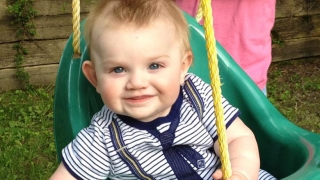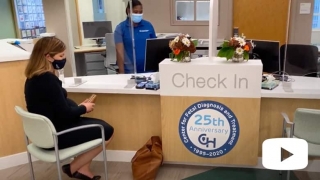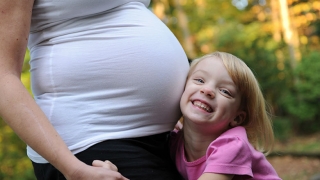Tara and Travis Markel first learned something was wrong with their unborn baby boy when they went in for a routine ultrasound near their home in Lancaster, PA. Tests showed that the baby’s bladder was the size of his head, indicating a serious birth defect. Their doctor wasn’t optimistic.
 “He just kept using words like lethal, fatal, grim, poor prognosis,” recalls Tara.
“He just kept using words like lethal, fatal, grim, poor prognosis,” recalls Tara.
But Tara and Travis weren’t ready to give up. In their research, they found the Center for Fetal Diagnosis and Treatment at The Children’s Hospital of Philadelphia. The more they learned, the more they knew it was where they needed to be.
“We learned that CHOP was the best place in the world to go for this diagnosis, and it was basically in our backyard,” says Travis. “We felt very fortunate.”
A comprehensive evaluation at the Center for Fetal Diagnosis and Treatment confirmed the diagnosis as lower urinary tract obstruction (LUTO). LUTO is a rare birth defect in which there is a partial or complete blockage of the urethra, the tube that connects the bladder to the amniotic fluid space around the fetus. This obstruction restricts or prevents the flow of urine, resulting in backup of urine in the bladder, ureters and kidneys. In addition, prolonged low levels of amniotic fluid around the fetus can result in underdeveloped lungs.
Prenatal treatment and delivery
After undergoing several bladder taps, the Markels learned their child was a candidate for a fetal shunt. This hollow tube would be placed into their baby’s bladder to temporarily bypass the obstruction and provide an alternate pathway for urine to flow through the abdominal wall to the amniotic fluid space around the fetus. This would allow for drainage of the urinary tract and bladder and maintain fluid around the fetus, which is necessary for lung development.
At 19 weeks, Tara underwent the fetal shunt procedure. As she got closer to delivery, she moved to a hotel just a few blocks from CHOP so she would be close in the event of early labor. She made it to term, delivering Owen in the Garbose Family Special Delivery Unit (SDU). The SDU is the world’s first birthing unit within a pediatric hospital dedicated to healthy mothers carrying babies with serious and life-threatening birth defects, allowing for immediate neonatal evaluation and assessment.
After he was born, doctors found that Owen had a narrowing of his urethra, also called urethral hypoplasia. As a result of this obstruction, Owen’s abdomen had swelled with fluid, causing it to be wrinkled, a condition known as prune belly syndrome, or triad syndrome. This condition is characterized by a weak abdominal wall, undescended testicles and a narrowing in the urethra that restricts the flow of urine.
Coming home
Arun K. Srinivasan, MD, a pediatric urologist in Division of Urology, performed a vesicostomy — a procedure that created an opening below Owen’s belly button to allow his bladder to drain directly into a diaper. Owen spent 19 days recovering in the Harriet and Ronald Lassin Newborn/Infant Intensive Care Unit (N/IICU) and finally came home the day after his dad’s birthday.
“It was a nice little birthday gift,” recalls Travis. “We were expecting him to be in the N/IICU several months, not just several weeks, so it was the happiest surprise for him to be able to come home so soon.”
Now 1 year old, Owen is followed by a team of specialists at CHOP, including Dr. Srinivasan and nephrology specialists. His vesicostomy will divert his urine until he is healthy enough to undergo urethral reconstruction surgery to create a clear passageway so he can urinate more normally.
He still has a journey ahead of him when it comes to his treatment, but you’d never know it from his sweet grin and big personality.
“He’s the happiest little guy,” says his mom. “Not a day goes by that we don’t think about the fact that our story was so close to being a totally different story. I just feel grateful that we took it upon ourselves to do the research and to find somewhere that could help.”

